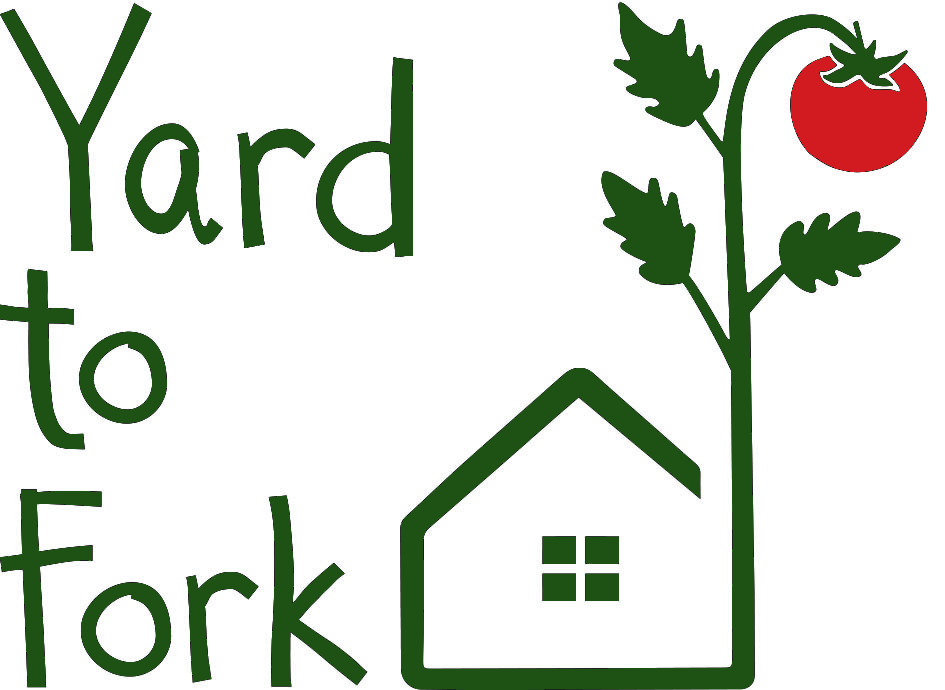The Do’s and Don’ts of Fruit Tree Planting
/We come across hundreds of fruit trees at Yard to Fork, and we’ve seen all manner of issues and problems pertaining to fruit trees. Some of these are easy to correct, while others require certain conditions to be met at the time of planting or while the tree is young, otherwise there can be permanent consequences. Let’s take a look at some of these situations, and what can be done to ensure they don’t happen!
Poor Placement
There are several factors in the proper placement of a fruit tree; soil, sunlight and space all play important roles. Most fruit trees are somewhat forgiving with soil type, although the less well-draining the soil, the wider and deeper the hole should be, and mounding the tree above the soil level by a foot or so may even be recommended. The wider and more gradual the mound slopes, the less likely the soil will be to wash away, exposing the roots.
Fruit trees prefer at least 6 to 8 hours of sunlight during the warm months for proper growth and fruit development, so knowing the path of the sun throughout the year is crucial. Evergreen trees like citrus will appreciate sunlight through the winter, while deciduous trees won’t have leaves and won’t mind a dip in light exposure. Also, here in the valley, fruit can sometimes burn in the hot afternoon sun during the Summer, so choosing a spot that gets some shade during the hottest time of the day can be an advantage. Pay attention to fences, nearby rooflines, trees and other tall structures when determining the sun exposure in an area.
When it comes to space, trees need it both above and below ground, and the root space is ultimately more important. A tree should be planted where you know the root ball can grow out unhindered in a full 360-degree arc, avoiding below-ground concrete, pools, concrete fence footings, and any known irrigation or gas lines. Expect the root ball of the tree to get at least as large as the canopy. The size of the tree canopy is totally controllable, so you can keep it as small or large as you prefer. We recommend keeping most yard fruit trees no taller than what you can harvest easily, usually preferring to keep them under 10 feet tall and wide. However, is the tree is also functioning as a screen or for shade, make sure you imagine and then measure how large you want it to get, and then confirm that it will be able to fit in the allotted space. Limbs hanging over the fence into a neighbor’s yard, against your gutters, or intertwining with power lines are often not anticipated at the time of planting, but should be!
Soil Amending
A soil amendment is any organic material that is added to soil to improve it in some way, whether it’s to add or subtract weight or density or improve the nutrient profile. Fruit trees appreciate some loamy, nutrient-rich soil when planted, which helps to ensure proper drainage and gives it a nutrient boost. Fruit trees that are planted directly in heavy clay with no amendment will often have drainage issues, and rocky soils can inhibit root growth. Most bagged or bulk soil types work just fine, although shoot to blend this amendment in with the native soil from the hole to a ratio of about 50/50. This will help the tree’s roots to get used to the nutrient and density profiles of the surrounding soil once they grow beyond the hole they were planted in.
Improper Planting
One of the most consistent problems we see, especially with newly-planted trees, is improper hole and root ball preparation. Aside from lack of water, nothing else will cause more immediate and long-term problems. Holes should be dug at least twice as wide as the width of the tree container. If a 15-gallon tree is 14 inches wide at the top of the pot, the hole should be dug at least 28 inches wide. Depth is important if the soil has high clay content and drainage is a problem, and loosening soil at the bottom of a hole is always a good idea, otherwise hole depth should be the same as the depth of the root ball.
Under regular circumstances where the soil drainage is at least decent, planting the crown of the tree (the place where the trunk meets the roots) a few inches above the level of the soil is useful, as the soil around the roots will settle over time and the tree will sink slightly. Without this small height boost at planting, trees can often sink several inches into the ground, creating a concave bowl where water can sometimes form a puddle around the trunk.
It’s not uncommon to see stunted trees that perhaps have been in the ground for several seasons, but for some reason won’t grow much larger than they were when planted. This is often a result of the root ball not being teased apart before planting. Roots can become root-bound, whereby they grow in the shape of the pot they’re in and end up wrapping around in a circular shape. This makes it difficult for the roots to find their way out of that shape, preventing them from growing out and away from the center and thus stunting the tree. Massaging the roots loosely before planting is a must, using your fingertips, or the edge of a trowel if the root ball is too dense to tease out with your hands. Once adequately loosened, the outer roots should be unwound and dangling all around the sides and bottom of the root mass.
Improper Irrigation Set-up
There are many ways to approach watering trees. Inline drip lines, slow-output drip heads, or larger-output spray heads and bubblers attached to moveable lines can all be effective if set up correctly. The key to any watering method is coverage, and controlling water output.
One of the most common mistakes we see with drip irrigation is the water source, for example two small drip heads, still staked down at the base of the trunk even after the tree has grown for several years. At this point, most of the roots near the trunk are thick and woody, and not absorbing any water or nutrients. These small drip heads are no longer accomplishing the original task they were installed to do, which was to water a small root ball. The feeder roots that absorb the most water and nutrients are mostly found out at the edge of the canopy. Watering along the edge of the canopy is the most important watering zone, although trees appreciate moisture throughout the root zone, not just close to the trunk.
Trees prefer a slow, gradual watering session over a longer period of time, which helps guarantee that water will find it’s way down into the deeper recesses of the root system. If too much water is released over an area too quickly, the chances are higher that a lot of that water might run off or puddle in areas away from your intended watering zone. Watering slowly can also help to assess issues with drainage as you’ll get a more accurate picture of your soil’s saturation when it’s been evenly watered over time. As long your preferred drip set-up is covering the root zone adequately and is watering slowly over an extended period, many watering issues will be avoided.
Leaving on Tree Tags
We often come across trees, both old and young, where branch or trunk wood has grown entirely around a plastic tree tag or a dangling string that once had a paper tag attached. You might have seen it yourself: pieces of brightly-colored plastic or string popping right out of the middle of a branch as if it grew out of the wood itself. These identification remnants were once wrapped around the tree at its origin nursery, and never removed, and thus the growing tree eventually enveloped them entirely. This can cause issues down the line, as any point at which moisture, and thus mold or fungus, can enter into the wood of a tree is potential rot waiting to happen.
Tree tags left on branches and trunks can also girdle trees, whereby the wood cinched under the tag is prevented from growing larger, while the wood on either side continues to do so. This results in the branch or trunk being strangled, limiting its water and nutrient uptake, and creating a narrow, weak spot in the structure of the limb.
With new trees, it’s always best to remove any and all tags once planted. Store the tags in a drawer or binder, or take pictures of them, in case you need to reference the tree variety in the future. It’s easy to forget that they’re on your tree, and before you know it, they’re permanently lodged in the tree’s wood.
Although this is not a complete list of potential fruit tree issues, hopefully this overview illustrates how many factors there are to consider when planting a fruit tree. As always, let us know if you have any questions or concerns with your own fruit trees!




